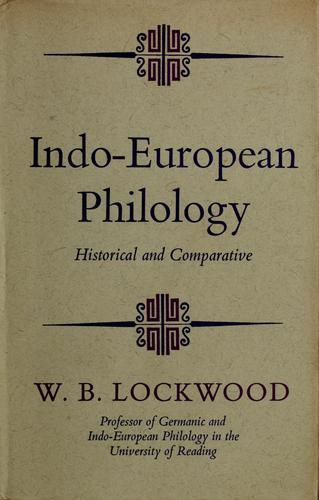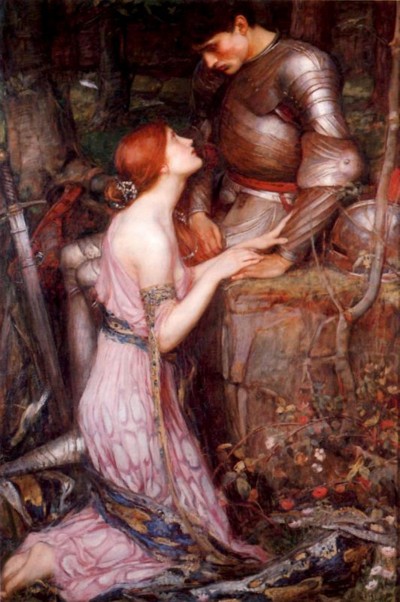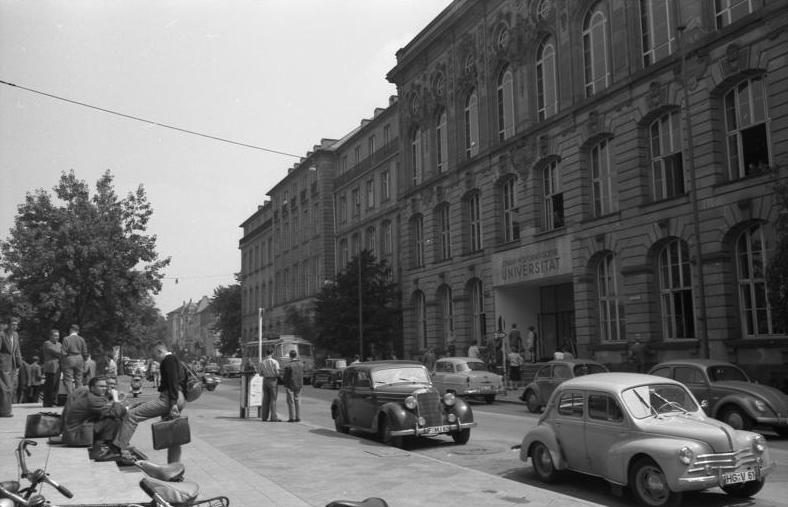|
Hartmut Hoffmann
Hartmut Hoffmann (4 May 1930, Berlin - 16 April 2016) was German medieval historian. Life He studied philosophy, art history, German studies, history and Latin philology at Frankfurt University, Marburg University and Cologne University. He graduated PhD in 1954 with a thesis on Carolingian history entitled ''Untersuchungen zur karolingischen Annalistik''. He habilitated from Bonn University in 1961 with a thesis entitled ''Gottesfriede und Treuga Dei'' and taught as professor of medieval and contemporary history at Göttingen University from 1967. He published several works on medieval history, especially on religious and cultural life. In 1980 he published a new study on the Chronicles of Monte Cassino in ''Scriptores'', a collection of essays published by '' Monumenta Germaniæ Historica'' - this led to several articles on the historiography of southern Italy in the Lombard and Norman eras and on the role of the papacy. He was one of the chief editors of the ''Monumenta'' f ... [...More Info...] [...Related Items...] OR: [Wikipedia] [Google] [Baidu] |
Philology
Philology () is the study of language in oral and written historical sources; it is the intersection of textual criticism, literary criticism, history, and linguistics (with especially strong ties to etymology). Philology is also defined as the study of literary texts as well as oral and written records, the establishment of their authenticity and their original form, and the determination of their meaning. A person who pursues this kind of study is known as a philologist. In older usage, especially British, philology is more general, covering comparative and historical linguistics. Classical philology studies classical languages. Classical philology principally originated from the Library of Pergamum and the Library of Alexandria around the fourth century BC, continued by Greeks and Romans throughout the Roman/Byzantine Empire. It was eventually resumed by European scholars of the Renaissance, where it was soon joined by philologies of other European ( Germanic, Celti ... [...More Info...] [...Related Items...] OR: [Wikipedia] [Google] [Baidu] |
Master Of The Registrum Gregorii
The Master of the Registrum Gregorii, also known as the Registrum Master or the Gregory Master, was an anonymous tenth-century scribe and illuminator, active in Trier during the episcopate of Egbert of Trier. His work is generally figural and characterized by large, statuesque figures enveloped in highly stylized drapery that suggest a volumetric body beneath. Shading is accomplished with lightening with white and darkening with deeper tones of the same color. The heads of the figures tend to be proportionally small, however the faces are rendered especially well. The attention to individual details suggests portraiture. Backgrounds are sparse or a flat gradient of usually a single color with the lighter shade above and the darker below. Overall, the Master of the Registrum Gregorii's style is iconic and monumental and represents the pinnacle of Ottonian manuscript illumination.Brodsky, Pavel and Jan Parez. Katalog Iluminovanéch rukopisu Strahovské Knihovny. Prague: Biblioteca Str ... [...More Info...] [...Related Items...] OR: [Wikipedia] [Google] [Baidu] |
Medievalists
Medievalism is a system of belief and practice inspired by the Middle Ages of Europe, or by devotion to elements of that period, which have been expressed in areas such as architecture, literature, music, art, philosophy, scholarship, and various vehicles of popular culture. Since the 17th century, a variety of movements have used the medieval period as a model or inspiration for creative activity, including Romanticism, the Gothic revival, the pre-Raphaelite and arts and crafts movements, and neo-medievalism (a term often used interchangeably with ''medievalism''). Renaissance to Enlightenment In the 1330s, Petrarch expressed the view that European culture had stagnated and drifted into what he called the "''Dark Ages''", since the fall of Rome in the fifth century, owing to among other things, the loss of many classical Latin texts and to the corruption of the language in contemporary discourse. Scholars of the Renaissance believed that they lived in a new age that broke ... [...More Info...] [...Related Items...] OR: [Wikipedia] [Google] [Baidu] |
2016 Deaths
This is a list of deaths of notable people, organised by year. New deaths articles are added to their respective month (e.g., Deaths in ) and then linked here. 2022 2021 2020 2019 2018 2017 2016 2015 2014 2013 2012 2011 2010 2009 2008 2007 2006 2005 2004 2003 2002 2001 2000 1999 1998 1997 1996 1995 1994 1993 1992 1991 1990 1989 1988 1987 See also * Lists of deaths by day * Deaths by year {{DEFAULTSORT:deaths by year ... [...More Info...] [...Related Items...] OR: [Wikipedia] [Google] [Baidu] |
1930 Births
Year 193 ( CXCIII) was a common year starting on Monday (link will display the full calendar) of the Julian calendar. At the time, it was known as the Year of the Consulship of Sosius and Ericius (or, less frequently, year 946 ''Ab urbe condita''). The denomination 193 for this year has been used since the early medieval period, when the Anno Domini calendar era became the prevalent method in Europe for naming years. Events By place Roman Empire * January 1 – Year of the Five Emperors: The Roman Senate chooses Publius Helvius Pertinax, against his will, to succeed the late Commodus as Emperor. Pertinax is forced to reorganize the handling of finances, which were wrecked under Commodus, to reestablish discipline in the Roman army, and to suspend the food programs established by Trajan, provoking the ire of the Praetorian Guard. * March 28 – Pertinax is assassinated by members of the Praetorian Guard, who storm the imperial palace. The Empire is a ... [...More Info...] [...Related Items...] OR: [Wikipedia] [Google] [Baidu] |
Deutsches Archiv Für Erforschung Des Mittelalters
The ''Deutsches Archiv für Erforschung des Mittelalters'' (''German Archive for Research into the Middle Ages''; often shortened to ''Deutsches Archiv'' or ''DA'') is a historical journal on history between 400 CE and 1500 CE, published by the Monumenta Germaniae Historica (MGH), the German institute for study of the Middle Ages. It numbers its volumes from 1937, named the ''Deutsches Archiv für Geschichte des Mittelalters'' (''German Archive for Medieval History'') from volume 7 (1944). Its forerunners were the twelve-volume 1820-1874 ''Archiv der Gesellschaft für ältere deutsche Geschichtskunde'' (''Archive for study of earlier German history'') and the fifty-volume 1876-1935 ''Neues Archiv der Gesellschaft für ältere deutsche Geschichtskunde'' (''New Archive for the study of earlier German history'' or ''NA''). It has been published in Weimar then Cologne by Böhlau Verlag Böhlau Verlag is a book and magazine publisher predominantly of humanities and social science disc ... [...More Info...] [...Related Items...] OR: [Wikipedia] [Google] [Baidu] |
Historische Zeitschrift
''Historische Zeitschrift'', founded in 1859 by Heinrich von Sybel is considered to be the first and for a time the foremost historical journal. The creation of this journal inspired Gabriel Monod to found the French '' Revue historique'' in 1876. In 1886 the ''English Historical Review'' was founded and in 1895 the ''American Historical Review'' was founded. It is published by Akademie Verlag GmbH, a subsidiary of Oldenbourg Wissenschaftsverlag GmbH. Editors ''Historische Zeitschrifts editors have included: * Heinrich von Sybel (18591895) * Heinrich von Treitschke (18951896) *Friedrich Meinecke Friedrich Meinecke (October 20, 1862 – February 6, 1954) was a German historian, with national liberal and anti-Semitic views, who supported the Nazi invasion of Poland. After World War II, as a representative of an older tradition, he crit ... (1896–1935) *Jürgen Müller *Eckhardt Treichel * Andreas Fahrmeir *Hartmut Leppin See also * Historiography#Some major historical jo ... [...More Info...] [...Related Items...] OR: [Wikipedia] [Google] [Baidu] |
Rudolf Schieffer
Rudolf Schieffer (31 January 1947 – 14 September 2018) was a German historian specializing in medieval history. From 1994 to 2012 he was president of the Monumenta Germaniae Historica. Biography Rudolf Schieffer was the son of the historian Theodor Schieffer. He graduated from high school (''Abitur'') in 1966, and studied history and Latin between 1966 and 1971 at the Rheinische Friedrich-Wilhelms-Universität Bonn and the Philipps-Universität Marburg. He received his doctorate in 1975 in Bonn, his dissertation, ''Die Entstehung von Domkapiteln in Deutschland'', supervised by Eugen Ewig. From 1975 to 1980 he worked at the Monumenta Germaniae Historica (MGH). His habilitation, for ''Die Entstehung des päpstlichen Investiturverbots für den deutschen König'', took place in 1979 at the University of Regensburg. In 1980 he was appointed professor of medieval and modern history at the Rheinische Friedrich-Wilhelms-Universität Bonn, and in 1994 went to the Ludwig-Maximilians- ... [...More Info...] [...Related Items...] OR: [Wikipedia] [Google] [Baidu] |
Sainte-Chapelle Gospel Book
The Sainte-Chapelle Gospels or the Sainte-Chapelle Gospel Book is an Ottonian illuminated manuscript now housed in the Bibliothèque nationale de France in Paris as Latin 8851. It is made up of 156 parchment folios, in a 38.5 cm by 28 cm format, making it one of the largest manuscripts of its era. It includes miniatures such as the canon tables, Christ in majesty and the Four Evangelists. It is the work of the Master of the Registrum Gregorii, the most famous illuminator of the Ottonian Renaissance. Dating and provenance It does not contain a miniature showing the man or woman who commissioned it (probably someone of high rank) and it does not have a title page, making its dating uncertain. On its title page for St Matthew's Gospel (folio 16, recto) are four medallions showing inscribed portraits of one of the sovereigns of the era, one in each side of the border: *Top: OTTO IMPERATOR AVG(ustus) ROMANOR(um) (Otto, Emperor Augustus of the Romans, ie Otto I, Holy Roman Emperor, Ot ... [...More Info...] [...Related Items...] OR: [Wikipedia] [Google] [Baidu] |
Frankfurt University
Goethe University (german: link=no, Johann Wolfgang Goethe-Universität Frankfurt am Main) is a university located in Frankfurt am Main, Germany. It was founded in 1914 as a citizens' university, which means it was founded and funded by the wealthy and active liberal citizenry of Frankfurt. The original name was Universität Frankfurt am Main. In 1932, the university's name was extended in honour of one of the most famous native sons of Frankfurt, the poet, philosopher and writer/dramatist Johann Wolfgang von Goethe. The university currently has around 45,000 students, distributed across four major campuses within the city. The university celebrated its 100th anniversary in 2014. The first female president of the university, Birgitta Wolff, was sworn into office in 2015, and was succeeded by Enrico Schleiff in 2021. 20 Nobel Prize winners have been affiliated with the university, including Max von Laue and Max Born. The university is also affiliated with 18 winners of the Gottfrie ... [...More Info...] [...Related Items...] OR: [Wikipedia] [Google] [Baidu] |

_001.jpg)


